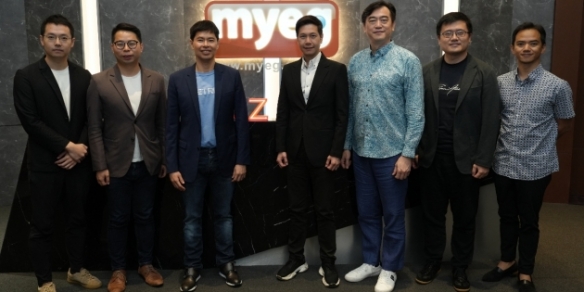APAC enterprises getting more social
By Digital News Asia November 22, 2012
- 52% of organizations already have an enterprise social network in place, 23% plan to adopt one in the next 18 months
- Security, compliance, governance and lack of control are cited as the most important inhibitors to deployment
 USAGE of enterprise social tools by Asia Pacific organizations is expected to hit 75% within the next 18 months according to a new IDC Enterprise Social Survey sponsored by Microsoft.
USAGE of enterprise social tools by Asia Pacific organizations is expected to hit 75% within the next 18 months according to a new IDC Enterprise Social Survey sponsored by Microsoft.
The survey found that 52% of organizations already have an enterprise social network in place, and an additional 23% plan to adopt one in the next 18 months.
Globalization is making Asian organizations not only more connected but also more integrated. Asia’s economy has grown tremendously since the introduction of the Internet in the late 90s. From 2007 to 2012, the growth in the number of Asia Pacific Internet users has been unprecedented, rising from 418 million to over one billion.
The rise in the use of social networks is equally remarkable with 204.9 million Facebook users in Asia, roughly 27% of Facebook’s non-US/ Canada user base. Facebook is not alone; services such as Skype and Live Messenger have also grown, reporting more than a quarter of a billion registered users worldwide.
According to Microsoft, organizations are looking to enterprise social technologies to gain competitive advantage, placing them well above investments in core networks, cloud computing and business intelligence.
Driving this trend in Asia Pacific are several factors including a young workforce, early adoption of gadgets and social media, as well as cultural trends such as relationship-focused business dealings.
Todd Cione, Microsoft’s chief marketing and operations officer for Asia, said that social isn’t just a new set of tools – it’s a new way of thinking about an organization. “It’s about putting people at the center of the organization and ensuring that customers, employees and partners can connect with the people and information they need to actually get their work done,” he said.
Cione added that to truly enable a connected user experience you have to create a single set of tools that integrate both productivity (the ‘where’ you work) and social tools (the ‘how’ you talk) into the same place.
“In addition to this, the rise of social media and networking is profoundly affecting the way organizations conduct their business and it’s poised to be particularly impactful in Asia as enterprises encourage the sharing of ideas, rich conversations and deep collaboration, while empowering employees,” he added.
Although the IDC Survey highlighted broad acceptance of the benefits of enterprise social in the workplace, challenges remain.
“Security, compliance, governance and lack of control are cited as the most important inhibitors to implement enterprise social but it is not viable for companies to resist adoption as end-users may turn to Internet-based, consumer grade, and potentially less secure options,” said Claus Mortensen, director of Emerging Technology Research at IDC Asia Pacific.
He added that organizations will need to educate themselves on the availability of solutions that also fulfill their IT requirements.
The IDC survey interviewed 352 decision makers and influencers from medium and large enterprises from across three sub-regions in Asia Pacific: Asean (Singapore, the Philippines, Malaysia, Indonesia and Thailand), ANZ (Australia and New Zealand) and Korea.


